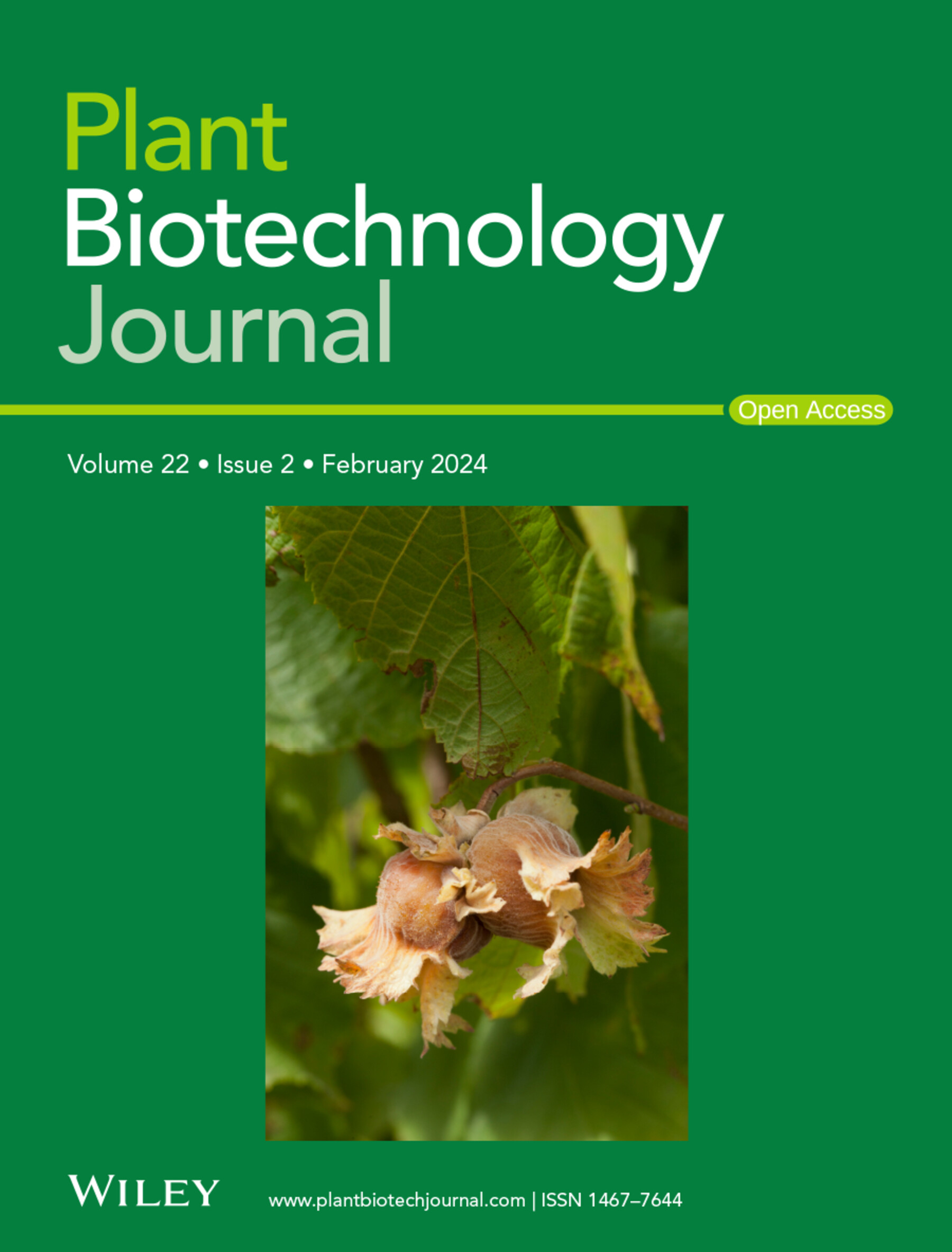A large-scale gene regulatory network for rice endosperm starch biosynthesis and its application in genetic improvement of rice quality
IF 10.1
1区 生物学
Q1 BIOTECHNOLOGY & APPLIED MICROBIOLOGY
引用次数: 0
Abstract
Rice (Oryza sativa L.) is one of the most important food crops. Starch is the main substance of rice endosperm and largely determines the grain quality and yield. Starch biosynthesis in endosperm is very complex, requiring a series of enzymes which are also regulated by many transcription factors (TFs). But until now, the large-scale regulatory network for rice endosperm starch biosynthesis has not been established. Here, we constructed a rice endosperm starch biosynthesis regulatory network comprised of 277 TFs and 15 starch synthesis enzyme-encoding genes (SSEGs) using DNA affinity chromatography/pull-down combined with liquid chromatography-mass spectrometry (DNA pull-down and LC–MS). In this regulatory network, each SSEG is directly regulated by 7–46 TFs. Based on this network, we found a new pathway ‘ABA-OsABI5-OsERF44-SSEGs’ that regulates rice endosperm starch biosynthesis. We also knocked out five TFs targeting the key amylose synthesis enzyme gene OsGBSSI in japonica rice ‘Nipponbare’ background and found that all mutants had moderately decreased amylose content (AC) in endosperm and improved eating and cooking quality (ECQ). Notably, the knockout of OsSPL7 and OsB3 improves the ECQ without compromising the rice appearance quality, which was further validated in the indica rice ‘Zhongjiazao17’ background. In summary, this gene regulatory network for rice endosperm starch biosynthesis established here will provide important theoretical and practical guidance for the genetic improvement of rice quality.水稻胚乳淀粉生物合成的大规模基因调控网络及其在水稻品质遗传改良中的应用
水稻是世界上最重要的粮食作物之一。淀粉是水稻胚乳的主要物质,在很大程度上决定着籽粒的品质和产量。淀粉在胚乳中的生物合成是一个非常复杂的过程,需要一系列的酶,这些酶还受到许多转录因子的调控。但到目前为止,水稻胚乳淀粉生物合成的大规模调控网络尚未建立。本研究利用DNA亲和层析/拉下结合液相色谱-质谱(DNA拉下和LC-MS)技术,构建了由277个TFs和15个淀粉合成酶编码基因(SSEGs)组成的水稻胚乳淀粉生物合成调控网络。在这个调控网络中,每个SSEG直接受到7-46个tf的调控。基于该网络,我们发现了调控水稻胚乳淀粉生物合成的新途径ABA-OsABI5-OsERF44-SSEGs。我们还敲除了粳稻“Nipponbare”背景中针对关键直链淀粉合成酶基因OsGBSSI的5个TFs,发现所有突变体都适度降低了胚乳中直链淀粉含量(AC),提高了食用和烹饪质量(ECQ)。值得注意的是,敲除OsSPL7和OsB3在不影响水稻外观品质的情况下提高了ECQ,这在籼稻“中家稻17”背景中得到了进一步的验证。综上所述,本文建立的水稻胚乳淀粉生物合成基因调控网络将为水稻品质遗传改良提供重要的理论和实践指导。
本文章由计算机程序翻译,如有差异,请以英文原文为准。
求助全文
约1分钟内获得全文
求助全文
来源期刊

Plant Biotechnology Journal
生物-生物工程与应用微生物
CiteScore
20.50
自引率
2.90%
发文量
201
审稿时长
1 months
期刊介绍:
Plant Biotechnology Journal aspires to publish original research and insightful reviews of high impact, authored by prominent researchers in applied plant science. The journal places a special emphasis on molecular plant sciences and their practical applications through plant biotechnology. Our goal is to establish a platform for showcasing significant advances in the field, encompassing curiosity-driven studies with potential applications, strategic research in plant biotechnology, scientific analysis of crucial issues for the beneficial utilization of plant sciences, and assessments of the performance of plant biotechnology products in practical applications.
 求助内容:
求助内容: 应助结果提醒方式:
应助结果提醒方式:


